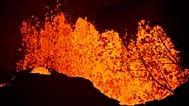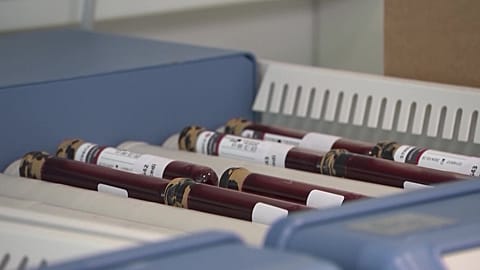Current drones used to hoist fire hoses up tall buildings and drop fire retardants are made of plastics and cannot fly near a fire.
When it comes to wildfires, Europe is facing potentially one of the worst summers it has seen this year.
According to the European Forest Fire Information System (EFFIS), more than 119,000 hectares had already been reduced to cinders across the European Union by June 18.
Researchers in Switzerland have successfully developed a heat-resistant drone that could be deployed in burning buildings and forests.
"Typically if there's a fire, the question is, 'is somebody inside? What does the structure look like? And where are the sources of the fire, of the heat?'... This is something that we can sense with the fire drone," said Professor Mirko Kovac, Head of the Laboratory of Sustainability Robotics at the Swiss Federal Laboratories of Material Science and Technology (Empa).
Kovac says he was inspired by the Grenfell Tower tragedy in London in 2017, a blaze in an apartment block that claimed the lives of 72 people.
"I used to live close to the tower in London. And it was really shocking to see this event and people used to ask me if I have a drone that can fly inside and I didn't have that," Kovac explained.
FireDrones can map the scene of a fire and identify anyone trapped in a fire using a thermal camera and an RGB camera.
Its developers say oxygen, gas, and toxicity sensors can be further added to examine the structure, toxicity, and heat distribution of the environment.
Drones have already been used before to take aerial footage, hoist fire hoses up tall buildings, or drop fire retardant in remote areas to slow the spread of wildfires.
But current drones developed for firefighting are unable to fly much closer lest their frames melt and their electronics fail.
Extremely lightweight and heat resistant
The developers of FireDrones used polyimide aerogel, a gel made of gas instead of liquid, around all essential elements of the drone. Aerogel is extremely lightweight and highly heat resistant.
FireDrone too can’t stay in the fire for too long but it can operate at 200°C for 10 minutes.
"We arranged it [aerogel] in a spherical geometry so that the heat transfer is low, We've integrated a CO2 cartridge that can cool down the internals of the drone, where also then the motors are located," Kovac added.
"So the motors are not on the periphery, they're inside the main capsule of the drone. And because of all of that the drone can fly and operate very robustly in very hot and very cold environments".
The team says they are now working to envisage a system where FireDrones are pre-placed in situations that need a rapid-fire response like industrial facilities or factories.
For more on this story, watch the video in the media player above.


















